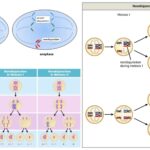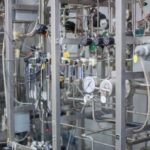AS and A Level Biology 95 Views 1 Answers
Sourav PanLv 9October 30, 2024
Describe the role of red blood cells in transporting oxygen and carbon dioxide with reference to the roles of: • haemoglobin • carbonic anhydrase • the formation of haemoglobinic acid • the formation of carbaminohaemoglobin
Describe the role of red blood cells in transporting oxygen and carbon dioxide with reference to the roles of: • haemoglobin • carbonic anhydrase • the formation of haemoglobinic acid • the formation of carbaminohaemoglobin
Please login to save the post
0
Please login to submit an answer.
Sourav PanLv 9May 15, 2025
Red blood cells (RBCs) play a critical role in transporting oxygen and carbon dioxide throughout the body, with specialized adaptations involving hemoglobin, carbonic anhydrase, haemoglobinic acid, and carbaminohaemoglobin that facilitate gas exchange.
1. Hemoglobin and Oxygen Transport
- Hemoglobin (Hb) is a protein in RBCs with a high affinity for oxygen, allowing it to carry up to four oxygen molecules per molecule. When RBCs pass through the lungs, oxygen diffuses into them, binding to hemoglobin to form oxyhemoglobin (HbO₂).
- This reversible binding enables hemoglobin to release oxygen into tissues where the partial pressure of oxygen is lower, allowing cellular respiration to occur.
2. Carbon Dioxide Transport Mechanisms
Carbon dioxide produced by cells as a metabolic waste product is transported back to the lungs for exhalation. This occurs in three main forms:
- Dissolved in Plasma (5-10%): A small portion of CO₂ is transported directly dissolved in the blood plasma.
- As Bicarbonate Ions (HCO₃⁻): This is the predominant form of CO₂ transport (approximately 70-80%) and involves two key steps:
- Carbonic Anhydrase: Within RBCs, the enzyme carbonic anhydrase catalyzes the reaction between carbon dioxide and water to form carbonic acid (H₂CO₃), which quickly dissociates into bicarbonate ions (HCO₃⁻) and hydrogen ions (H⁺).
- The bicarbonate ions diffuse into the plasma, allowing CO₂ to be carried in a dissolved form. This process also helps maintain acid-base balance in the blood.
- As Carbaminohaemoglobin (HbCO₂): The remaining CO₂ (about 20-30%) binds directly to hemoglobin, forming carbaminohaemoglobin. This occurs more readily when hemoglobin is in its deoxygenated form, such as in tissues where oxygen is being offloaded.
3. Role of Haemoglobinic Acid in pH Balance
- The hydrogen ions (H⁺) produced from the dissociation of carbonic acid bind to deoxygenated hemoglobin to form haemoglobinic acid (HHb). This prevents the free H⁺ ions from lowering blood pH, thus stabilizing the blood’s acid-base balance.
- Hemoglobin acts as a buffer, helping to prevent large shifts in blood pH levels, which could otherwise disrupt cellular function.
0
0 likes
- Share on Facebook
- Share on Twitter
- Share on LinkedIn
0 found this helpful out of 0 votes
Helpful: 0%
Helpful: 0%
Was this page helpful?




